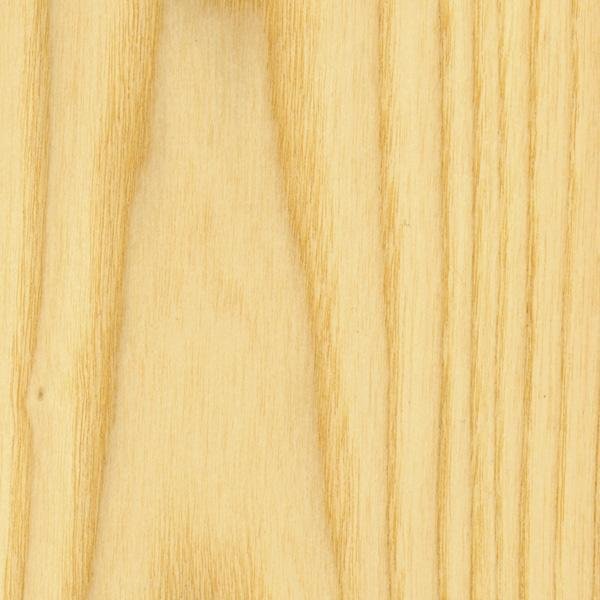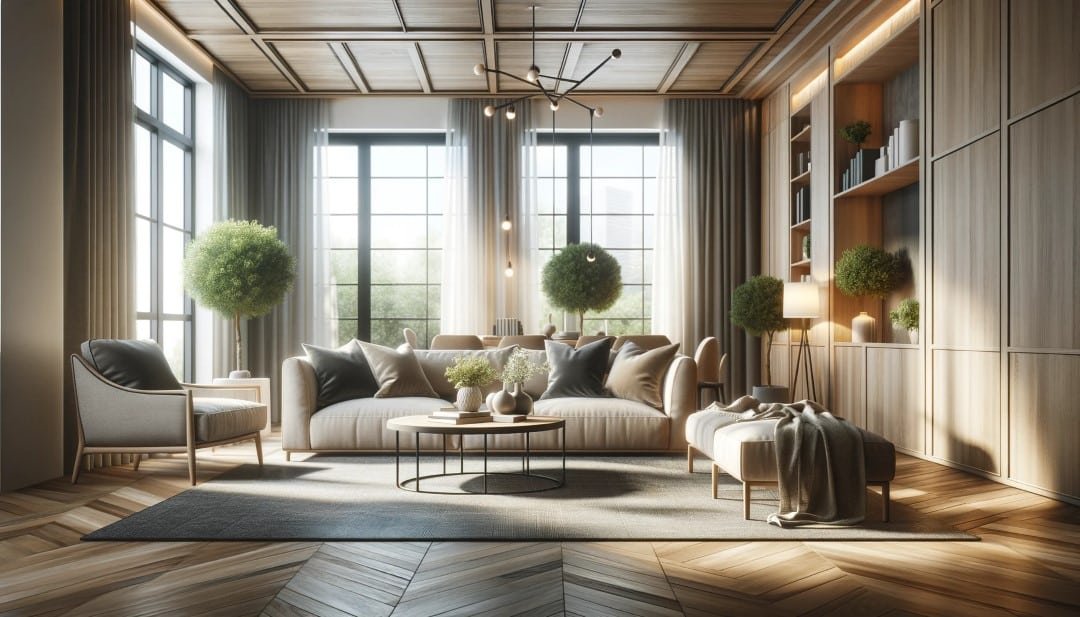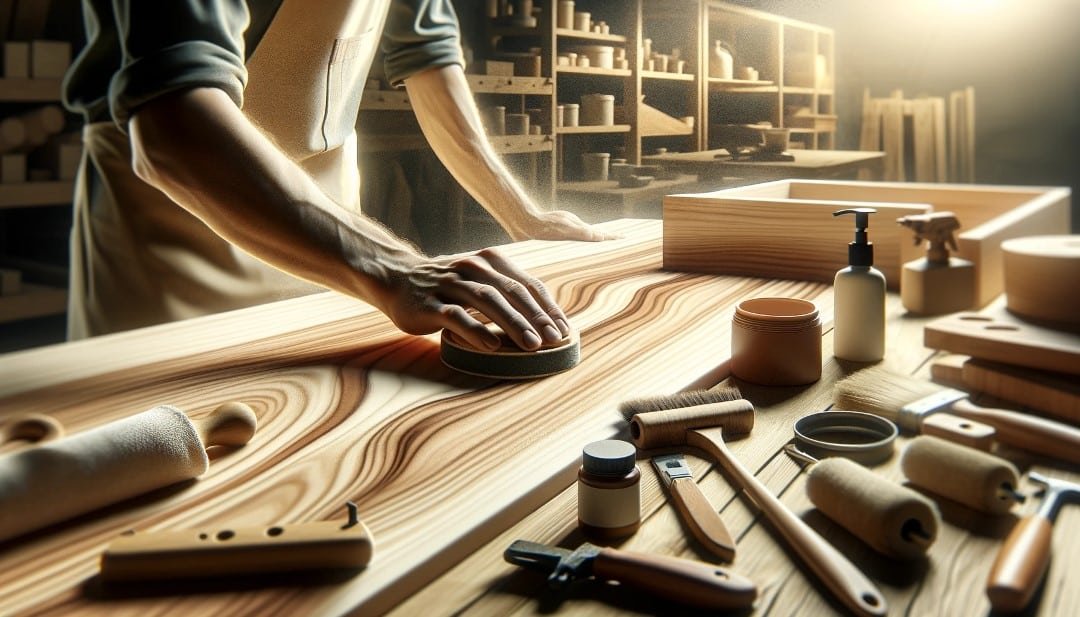
The Ultimate Guide to Ash Wood: 10 Must-Know Facts

Table of Contents
Introduction
Ash wood is known for its beauty, strength, and flexibility. It has been a favorite of craftsmen and designers for many years. From elegant furniture to resilient sporting goods, the applications of ash lumber are as diverse as they are impressive. This guide covers the top 10 important facts about ash wood. It explains why ash wood is a great choice for many projects.
Comprehensive Characteristics of Ash Wood (Fraxinus)
Ash wood, belonging to the genus Fraxinus, is celebrated for its excellent mechanical properties and aesthetic appeal. We will explore the scientific features of ash lumber. We will also discuss where it grows. Finally, we will highlight the qualities that make ash lumber special for woodworking and design.
- Common Names and Scientific Name: Known simply as ash, its varieties include white ash (Fraxinus americana), black ash (Fraxinus nigra), and European ash (Fraxinus excelsior) among others.
- Distribution and Habitat: Ash trees are predominantly found in the temperate regions of North America, Europe, and Asia, thriving in rich, moist, well-drained soils.


| Property | Description |
|---|---|
| Tree Size | 65-100 ft (20-30 m) tall, 2-5 ft (.6-1.5 m) trunk diameter |
| Average Dried Weight | 42 lbs/ft³ (675 kg/m³) |
| Specific Gravity (Basic, 12% MC) | .55, .67 |
| Janka Hardness | 1,320 lbf (5,870 N) |
| Modulus of Rupture | 15,000 psi (103.4 MPa) |
| Elastic Modulus | 1.74 million psi (12.0 GPa) |
| Crushing Strength | 7,410 psi (51.1 MPa) |
| Shrinkage (Radial, Tangential, Volumetric) | 4.9%, 7.6%, 12.2% |
These properties show that ash wood is very strong and durable. This makes it a popular choice for furniture that lasts a long time. It is used for sports equipment. This includes baseball bats and hockey sticks. Flexibility and resistance to impact are important for these items.
Ash Wood Grain
Ash wood is known for its straight, coarse, and even texture. The grain is typically straight, though it can also be slightly interlocked. This wood has a light to medium brown color, sometimes with lighter or darker streaks. The sapwood can be very wide, and tends to be beige or light brown, not always clearly or sharply demarcated from the heartwood. Its distinctive grain pattern also makes it desirable for decorative veneers and architectural millwork.
The Historical Significance of Ash Wood
Ancient Uses and Cultural References
Ash wood has been valued by many cultures for centuries. It is admired for both its physical qualities and its symbolic meaning. In Norse mythology, the ash tree Yggdrasil is known as the world tree. It is a key symbol that connects different realms of the universe. This strong cultural importance is seen in the old use of ash wood for weapons, tools, and spiritual items. It shows its strength, flexibility, and link to the earth.
Evolution of Use in Modern Woodworking and Furniture Design
From the hand-made tools of our ancestors to the stylish furniture in today’s homes, ash lumber has changed in its uses. It still holds a respected place among materials. Its strength and ease of use have made it a favorite for artisans and furniture makers. They love the wood’s natural beauty and how it works for both traditional and new designs.
Ash Lumber in Design and Architecture

Advantages of Using Ash Wood in Interior Design
Ash wood brings a unique combination of lightness, strength, and aesthetic appeal to interior design. Its grain pattern and color can add warmth and brightness to spaces. This makes it a great choice for flooring, paneling, and furniture. Additionally, its versatility allows it to be stained or treated to match various decor styles, from rustic to contemporary.
Notable Projects and Architects That Prefer Ash Wood
Several renowned architects and designers have favored ash lumber for its natural beauty and structural properties. Its use in important projects, like public buildings, luxury interiors, and unique furniture, shows ash wood’s versatility. This wood remains popular in architecture and design.
Sustainability and Environmental Impact
Ash Wood’s Ecological Footprint
As a natural, renewable resource, ash wood offers an eco-friendly option for construction and design projects. Its sustainability is enhanced when sourced from responsibly managed forests, which contribute to the conservation of biodiversity and ecological balance. The effect of pests like the emerald ash borer beetle shows how important it is to monitor and protect ash lumber sources. This helps ensure their long life and sustainability.
Sustainable Sourcing Practices for Ash Wood
Promoting sustainable sourcing practices is crucial in preserving ash lumber populations and their natural habitats. This means you should follow certifications like FSC and PEFC.
FSC stands for Forest Stewardship Council.
PEFC stands for Programme for the Endorsement of Forest Certification. These certifications ensure that ash lumber is gathered in an environmentally friendly and socially responsible way. Such practices help maintain the health of forests and ensure a sustainable supply of ash lumber for future generations.
The Economic Perspective of Ash Wood
Price Comparison with Other Hardwoods
Ash wood is valued for its many good qualities. It is also liked for being more affordable than other hardwoods like oak or walnut. This cost-effectiveness makes ash lumber available for many projects. These projects can be big architectural works or small woodworking crafts.
Factors Influencing the Cost of Ash Wood
Various factors, including availability, demand, and the lumber’s quality, can influence the ash lumber’s cost. Market changes and diseases like the emerald ash borer can affect prices. This shows why sustainable management and diversifying wood sources are important.
Working with Ash Wood: Tips and Techniques
Machining, Gluing, and Finishing
Tips Ash wood’s workability is one of its most appreciated qualities among craftsmen and woodworkers. When machining ash, sharp tools are recommended to prevent tear-out, a common issue due to its straight grain pattern. Ash glues well, making it suitable for furniture assembly and woodworking projects. For finishing, ash lumber has open pores that absorb stains and finishes evenly. Using a pre-stain wood conditioner can improve the uniformity of the finish.
Best Practices for Achieving Optimal Results
Achieving the best results with ash wood involves several best practices. Firstly, considering its tendency to react with iron, using stainless steel or coated fasteners can prevent staining. For outdoor projects, using a UV-resistant finish on ash lumber will help keep its color and protect it from the weather. Regular maintenance, including cleaning and touch-ups, will keep ash lumber looking its best over time.
Ash Wood Maintenance and Care

Cleaning and Care Tips for Ash Wood Furniture and Floors
To keep ash wood furniture and floors in good shape, clean them often. Use a soft, damp cloth to wipe away dust and stop buildup. Avoid harsh chemicals or abrasive cleaners that can damage the wood’s surface. To protect floors, use felt pads under furniture legs. Place mats near entrances to keep dirt off the wood.
How to Prolong the Life of Ash Wood Products
To prolong the life of ash lumber products, it’s essential to control the environment where they are placed. Avoid direct sunlight and extreme humidity changes, which can cause warping or cracking. Periodic reapplication of protective finishes can also help preserve the wood and maintain its natural beauty.
Comparing Ash lumber to Other Hardwoods
Strengths and Weaknesses Versus Oak, Maple, and Walnut
Compared to other popular hardwoods like oak, maple, and walnut, ash wood offers a unique balance of strength, elasticity, and affordability. Its lighter color and pronounced grain pattern provide a distinct aesthetic appeal. However, ash may not be as resistant to moisture or as hard as some of these other woods, making it less suitable for certain outdoor applications without proper treatment.
Ideal Use Cases for Ash Wood Compared to Alternatives
Ash wood is great for indoor furniture, flooring, and sports equipment. It is strong and flexible, making it a good choice. Oak and walnut are often chosen for their strength and unique colors in luxury furniture. However, ash is a great alternative. It is versatile and cost-effective for many uses. Ash offers both beauty and durability.
Future Trends in Ash Wood Usage
Innovations in Processing and Treatment
Advancements in wood treatment and processing technologies are broadening the applications of ash lumber. Thermal modification and chemical treatments can make it more durable. This helps it resist moisture and pests. As a result, it can be used more in outdoor furniture and architectural elements.
Emerging Trends in the Woodworking Industry
Sustainability trends in the woodworking industry are influencing the use of ash wood. As consumers increasingly seek eco-friendly materials, the demand for responsibly sourced ash lumber is growing. The return of traditional woodworking methods and modern design trends shows that ash lumber is versatile and attractive. It is used in both functional items and artistic works.
Conclusion
Ash wood’s remarkable characteristics, historical significance, and versatile applications make it an indispensable material in woodworking, design, and architecture. As we adopt sustainable practices and new technologies, the future of ash lumber looks bright. It continues to inspire and change how we create and design.
FAQs
-
What makes ash wood suitable for furniture making?
Ash wood is highly valued in furniture making due to its combination of strength, durability, and aesthetic appeal. Its grain pattern is unique and clear, giving character to the pieces. It also has great shock resistance, making it perfect for furniture that gets a lot of use.
-
Can ash wood be used outdoors?
Yes, ash wood can be used outdoors, but it requires proper treatment and finishing to protect against moisture and UV damage. Untreated ash lumber may not withstand outdoor conditions as well as some other hardwoods.
-
How does ash wood compare to oak in terms of durability and cost?
Ash wood is similar to oak in terms of durability, offering good strength and shock resistance. However, ash is generally less expensive than oak, making it a cost-effective alternative for many projects.
-
What are the main threats to ash wood trees, and how do they affect the wood’s availability?
The main threat to ash trees is the emerald ash borer, an invasive beetle that can kill ash trees. This has affected the availability of ash lumber in some areas, making sustainable sourcing practices more important than ever.
-
What are the unique properties of ash wood that differentiate it from other hardwoods?
Ash wood is special because it balances flexibility and strength well. It has a unique grain pattern and a lighter color. This makes it useful for both traditional and modern designs.
-
How is ash wood being used in innovative ways in modern design and architecture?
In modern design and architecture, ash wood is used in new ways. It is used in bentwood techniques for furniture. It is also used in sustainable building projects because it is eco-friendly. Additionally, it is used in decorative veneers for its beautiful grain patterns.








